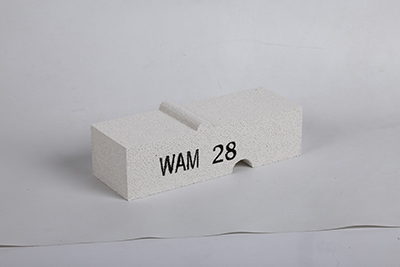The Best Solution For Energy Saving And Reducing CO2 Emission
The Best Solution For Energy Saving And Reducing CO2 Emission
 Tel: +86-532-85717690/85717352/85832089
Tel: +86-532-85717690/85717352/85832089 E-mail: wam@wamcn.net
E-mail: wam@wamcn.net
Refractory bricks are inorganic non-metallic materials with a refractoriness of not less than 1580°C. They are the basic materials for high-temperature technology and the structural materials of thermal equipment such as masonry kilns. They are also used to manufacture certain high-temperature containers and parts or play special roles. Functional Materials.
The successful use of refractory bricks under the action of high temperature must have good structure, thermal properties, mechanical properties and use performance, that is, high refractoriness, load softening temperature, thermal shock resistance and chemical corrosion resistance. Withstand various physical and chemical changes and meet the requirements of thermal equipment and components.

Then there is a question, why can refractory bricks withstand high temperatures? Why can't other materials withstand high temperatures? What raw materials are it made from? As a professional refractory bricks manufacturer, we will explain three reasons why refractory bricks are resistant to high temperatures.
1. From raw material analysis
The raw materials used in the production of refractory bricks are generally natural ores, such as bauxite, silica, magnesite and other raw materials that are processed to produce refractory bricks with different properties, such as aluminum-silicon refractory bricks, siliceous refractory bricks and magnesia Three types of refractory bricks.
When using bauxite as raw material to produce aluminum-silicon refractory bricks, its main component is alumina, which is hydrated alumina containing impurities. It is an earthy mineral, insoluble in water, soluble in sulfuric acid and sodium hydroxide. Solution. The main purpose is to smelt aluminum and make refractory materials, because the high bauxite clinker has a refractoriness of up to 1780°C, strong chemical stability and good physical properties.
The raw material for making siliceous refractory bricks is silica, the main component of which is SiO2. The higher the content, the higher the refractoriness. The production of silica bricks is based on natural silica as the raw material, plus an appropriate amount of mineralizer to promote the conversion of quartz in the green body into tridymite. Slowly fired at 1350~1430℃ in a reducing atmosphere. Has high high temperature strength.
Magnesite is the main raw material for making magnesia refractory bricks. Its basic component is MgO. Magnesium oxide has high fire resistance and insulation properties. Magnesium refractory bricks are alkaline refractory bricks, which have strong resistance to alkaline slag, but cannot resist acid slag erosion. The refractoriness is above 2000 ℃, but its load softening point is only 1500 ℃, and thermal shock is stable.
2. Belongs to inorganic non-metallic materials
Inorganic non-metallic materials, organic polymer materials and metal materials are listed as three major materials. The characteristics of ordinary inorganic sub-metallic materials are: high compressive strength, high hardness, high temperature resistance and corrosion resistance. In addition, ceramics are in corrosion resistance and refractory materials. Heat and heat insulation have their excellent characteristics, which are incomparable to metal materials and polymer materials.
3. Forming and sintering
The production process of refractory bricks is through the process of mineral crushing-raw material mixing-machine forming-high temperature sintering to finally produce a product that resists high temperature. The sintering temperature of the green body after high temperature tunnel kiln will be higher than its product load The softening temperature is generally above 1500℃. The refractoriness is above 1770℃. High temperature resistance is better. Refractory bricks are mainly used to build the lining of steel-making electric furnaces, glass melting furnaces, cement rotary furnaces, etc.
Summary
The three reasons why refractory bricks can resist high temperatures mainly rely on: ① The raw material minerals used in refractory bricks have high refractoriness. ② As an inorganic non-metallic material, the level of raw materials determines the level of its use. ③ The finished body passes through a high temperature above 1500 ℃ in a high temperature tunnel kiln, so refractory bricks can resist high temperatures and are suitable for high temperature kiln ling.